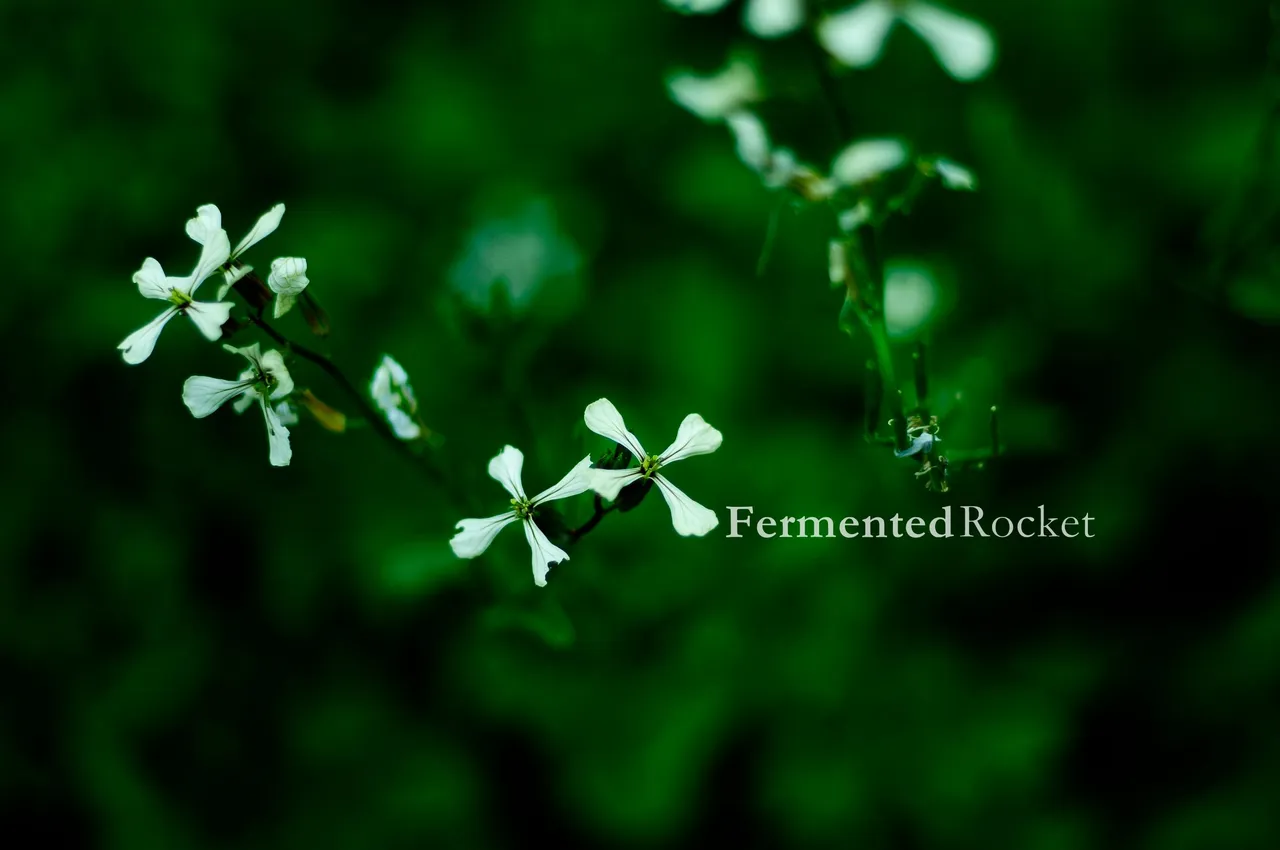

A Peppery Introduction
It astonished me when I realised that I had never written an in-depth post on salad rocket or arugula (Eruca sativa), how to grow it, and all of the potential pests that might attack it, after the many years that I have been growing it. I have come to see myself as kind of the “rocket guy” when it comes to growing food as I have been growing it and collecting its seeds for many many years now. Through the years, I have also collected “vast amounts” of knowledge or personal wisdom in terms of growing this very simple herb. Currently, standing in front of all of its little white flowers, I though why not try and collect all of what I know about this plant into a post.
So, in this following post, I will be reflecting mostly on what I have written throughout the years, and summarise in a hopefully concise way how to grow it. If you want to have salad rocket for the rest of your life, please follow along as I show you in very simple ways how you can achieve this. I also hope that you can learn something new from this post, as this little herb is so close to my heart, being one of the first plants I successfully grew and harvested. I will write a kind of love letter to this herb, by showing you how to grow it, how to harvest it, what to do with it, what pests might come along on your growing journey, and how to successfully harvest the seeds so that you can have an everlasting supply of it. So, without further ramblings, let me get into this.
Growing Salad Rocket (at Home)
Growing salad rocket yourself is so easy and might be better than harvesting it in the “wild” (I discuss this below). It begins by sowing the seeds directly in the ground (if you live in areas where it is not too cold). From my experience, there is two types of growing climates (so far) for me as this herb tends to prefer colder temperatures. For my years, I have been solely sowing it in the early autumn. My growing season was early autumn until begins spring. In the early spring, it bolted and went to seed. I then let the seeds dry in the summer heat. The growing conditions was then: winter rainfall area, very high humidity (80%), and at sea level.
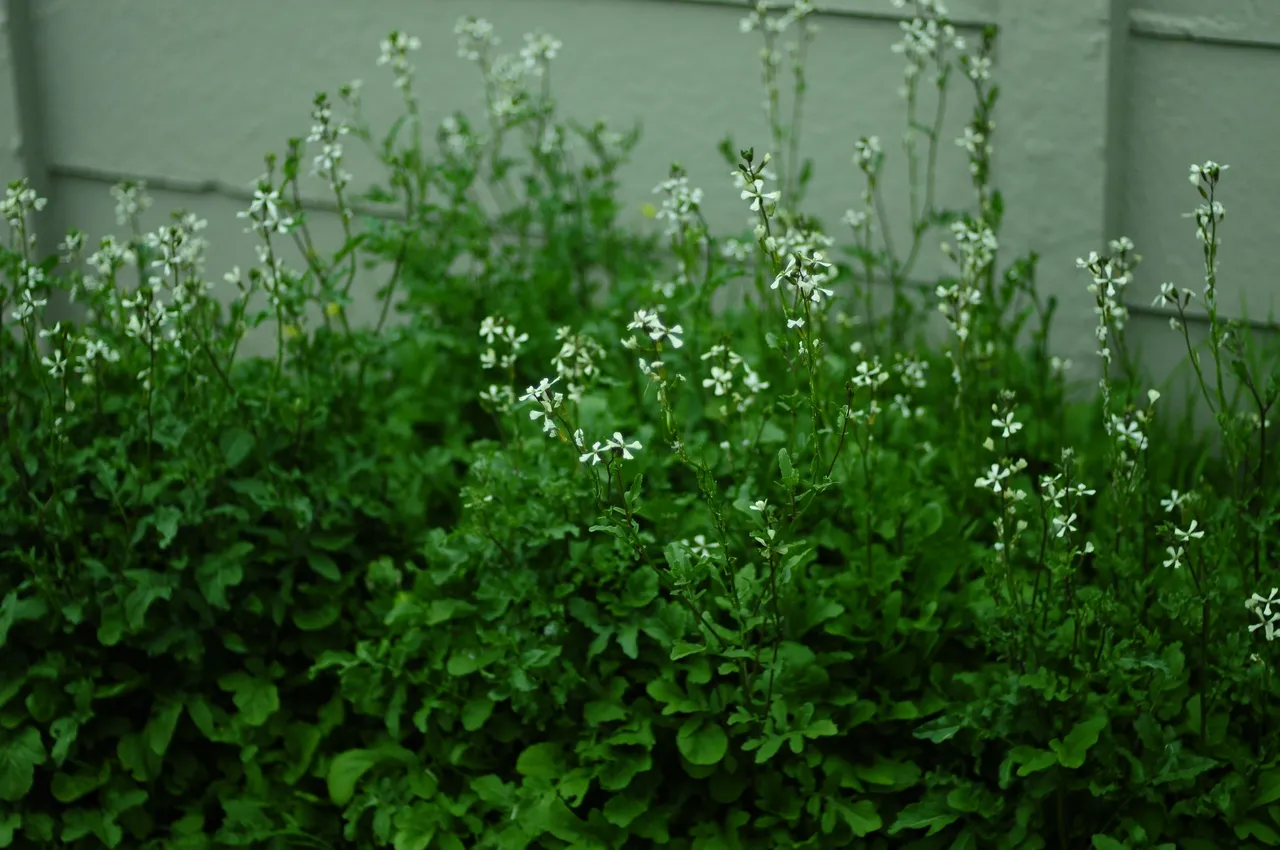
This year, I found that the growing season was the other way around. I found myself a 1000m above sea level, in a summer rainfall area, and with very low humidity (25%). The abundance of leaves I have is amazing, some of the best that I had in years.
So, in conclusion, I think salad rocket can grow in both growing seasons. But some factors might impinge on its growth. In the Cape, my original growing area, I could not grow salad rocket in the summer as the plants always bolted within the first couple of weeks, producing very little if any leaves. But when I flew a 1000km away from the Cape to more of the centre of the country, high above sea level, I could suddenly grow it. And it grew into extremely big plants.
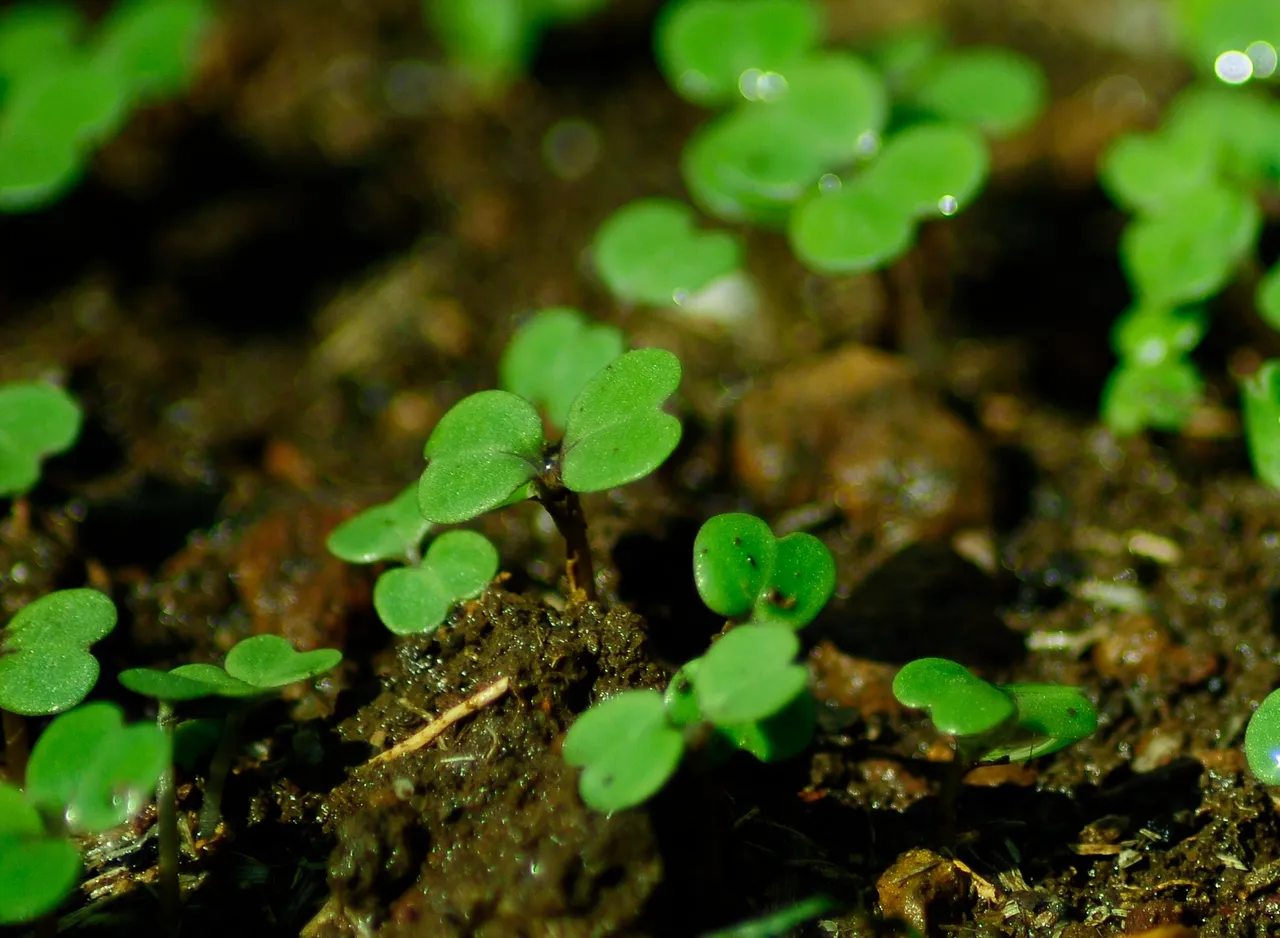
My advice, sow your seeds either in the early spring or autumn. At first, water it well. The seedlings take about 1 week to show, and you can begin to harvest in the first 3-6 weeks of sowing. After this, depending on the weather and rainfall area, water regularly as this will ensure that the plant will grow juicy and big leaves. Some of the leaves that I harvested this year was bigger than my hand (image below), something you will rarely see in store-bought salad rocket.

Identifying Salad Rocket (in the Wild): Possible Lookalikes
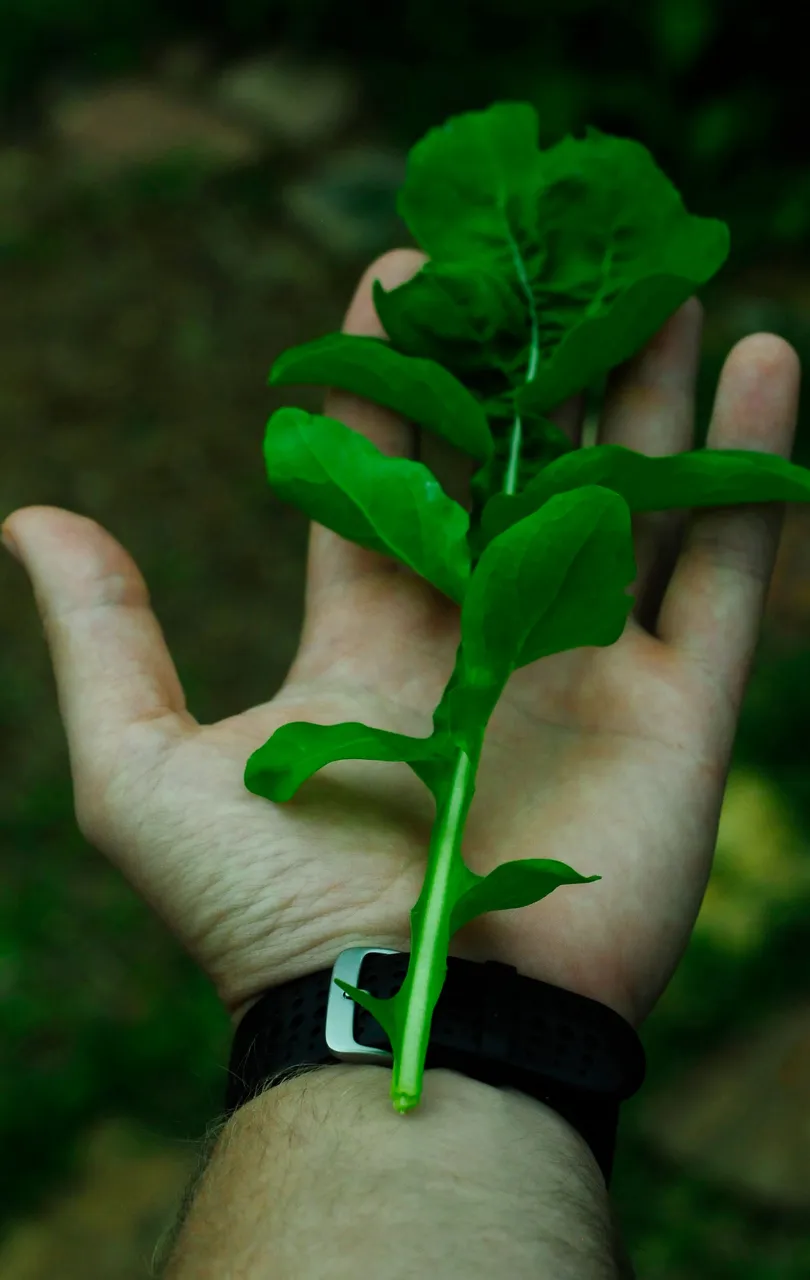
There are a couple of key characteristics in identifying salad rocket in the wild. I have actually never seen salad rocket grow in the wild as it does when you grow it yourself. One of the reasons being that the plant tends to grow “differently” in the wild due to amongst other reasons the lack of water. But beware when identifying this plant in the wild. There are some lookalikes. What comes to my mind are some of the wild mustard varieties, especially in the early growing seasons when it does not yet have flowers. Wild mustards have, for example, small yellow flowers, whereas salad rocket has distinct white flowers. But another type of “rocket” or what has been labelled as wild rocket or Perennial Wall-rocket (Diplotaxis tenuifolia) is often mistakenly sold as rocket. But any gardener growing both these plants will tell you how easy it is to distinguish between the two. The leaves are totally different, with salad rocket having bigger and fuller leaves compared to the wild rocket variety. Also, the white flowers are again a dead giveaway opposed to the wild rocket’s yellow leaves. And lastly, the wild rocket seedpods are similar to wild mustards (because wild rocket is part of the mustard family) whereas salad rocket’s seed pods are smaller and more compact.
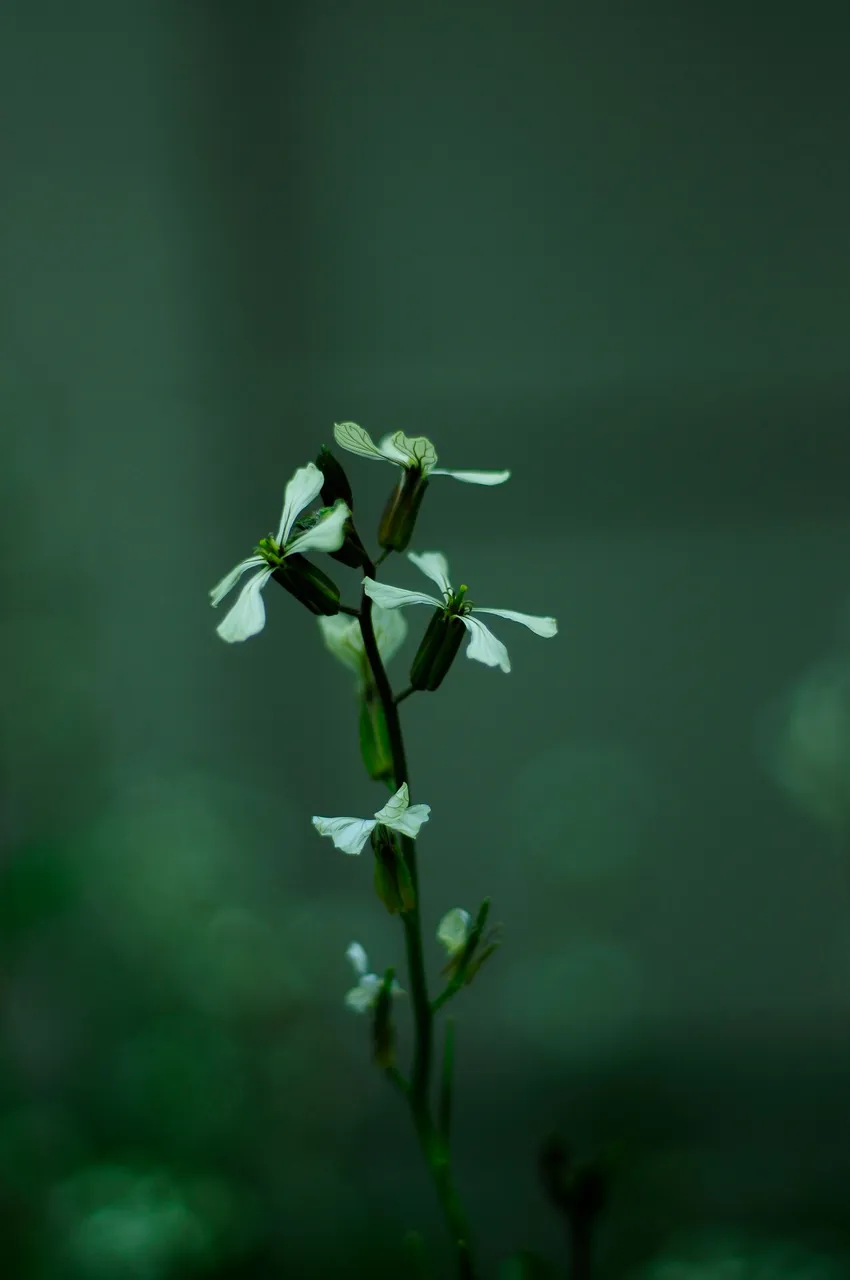 | 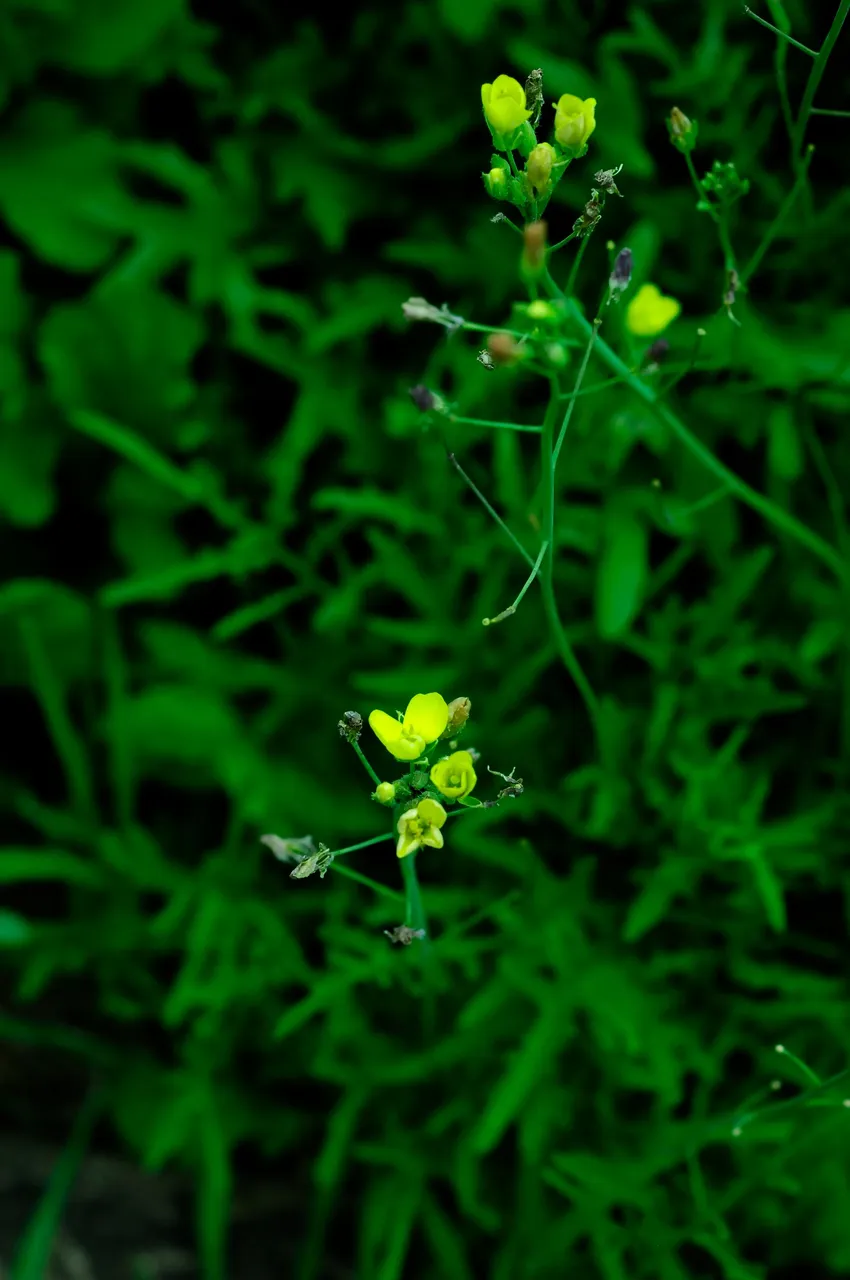 |
|---|---|
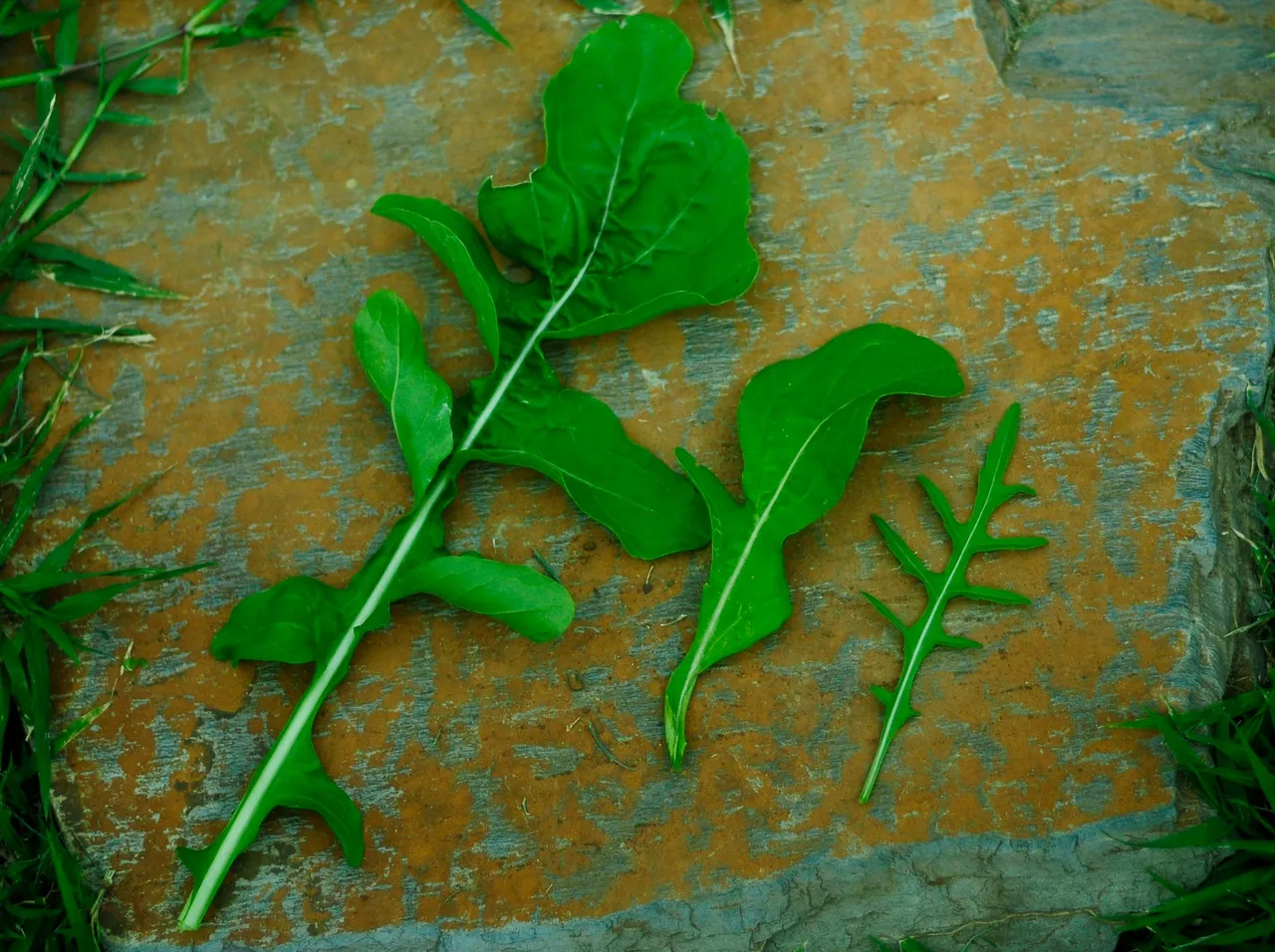
Harvesting from the Abundance
Harvesting the leaves is really simple. I usually pick the outer leaves to ensure that new growth will come from the centre of the plant. I usually harvest two or three leaves per plant, especially when they are younger. So, if you have the space, plant plenty of salad rocket. I usually plant them close to each other so that I can plant more of them. The stronger plants will survive, and when they are young you can aggressively harvest the plants you think will not yield many leaves.
The many Uses and Health Benefits of Salad Rocket
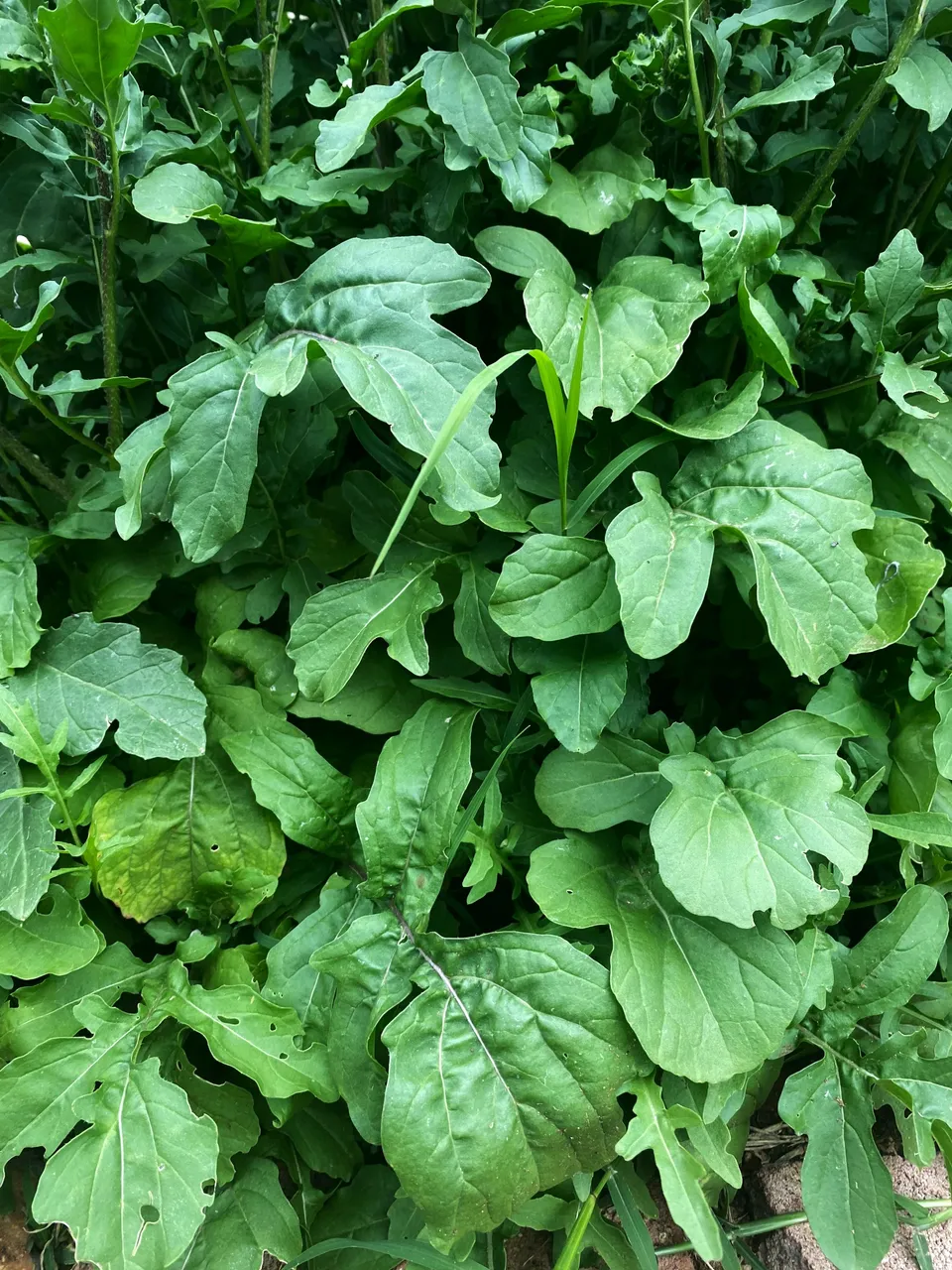
Due to the abundance of leaves that I had this year, I had to think creatively about how to use them. From various pesto’s and salads, to soups and stir fries, you can use salad rocket in various ways. When you let the leaves grow really big, as I showed above, you can you the leaves similarly to Swiss chard or Spinach. I have made lasagna where I only used rocket leaves as filling, and I add the leaves to any of my dishes where I would have added some leafy greens. When you cook the rocket leaves, they do lose some of the peppery flavour, so I always add other leafy greens as well, like Amaranthus leaves. I have not yet tried it, I will in the future, but you can make mustard from the seeds as well. One can also use the flowers for salads, but I rarely do this as they are only open for a short period of time. I prefer to use the flowers of wild rocket and mustards plants as garnishes.
Before briefly discussing the health benefits of adding copious amounts of salad rocket into your diet, there have been some news reports stating that salad rocket can have very high dosages of nitrates in it. It is worth noting that this article buries the fact that people grew their salad rocket using fertilisers, which cause the spike in the first place.
That said, I believe that salad rocket is extremely healthy. According to one website, salad rocket is high in Calcium, Potassium, Folate, Vitamin C, Vitamin K, and Vitamin A. Due to the peppery taste, there is also high amounts of sulphur compounds present in the leaves, which is essential for a healthy diet. That said, too much of a good think is also not good, so balance is key. But overeating on a herb that tastes peppery and sometimes burns your tongue is not easy.
Along Came a Pest: Dealing with Loss
Growing salad rocket can sometimes feel like its “too good to be true”. Everyday watching my current crops of salad rocket growing, I feel uneasy as I expect something to either eat the beautiful leaves or infect the plant. Both have happened to me.
In 2021, I had a massive crop failure due to the Cabbage White Butterfly (Pieris brassicae) caterpillars eating all of my leaves and seed pods. It was a matter of days when they destroyed everything. I did not know at the time that it would be that bad. I left the caterpillars as I thought they would only eat some of the leaves. But this was not the case, they are extremely hungry! Luckily, in the meantime I had not had such an infestation. If you are like me and you do not want to use insecticides, regularly check your leaves for eggs, and also check for small caterpillars. As soon as you see them, unfortunately, you need to kill them.
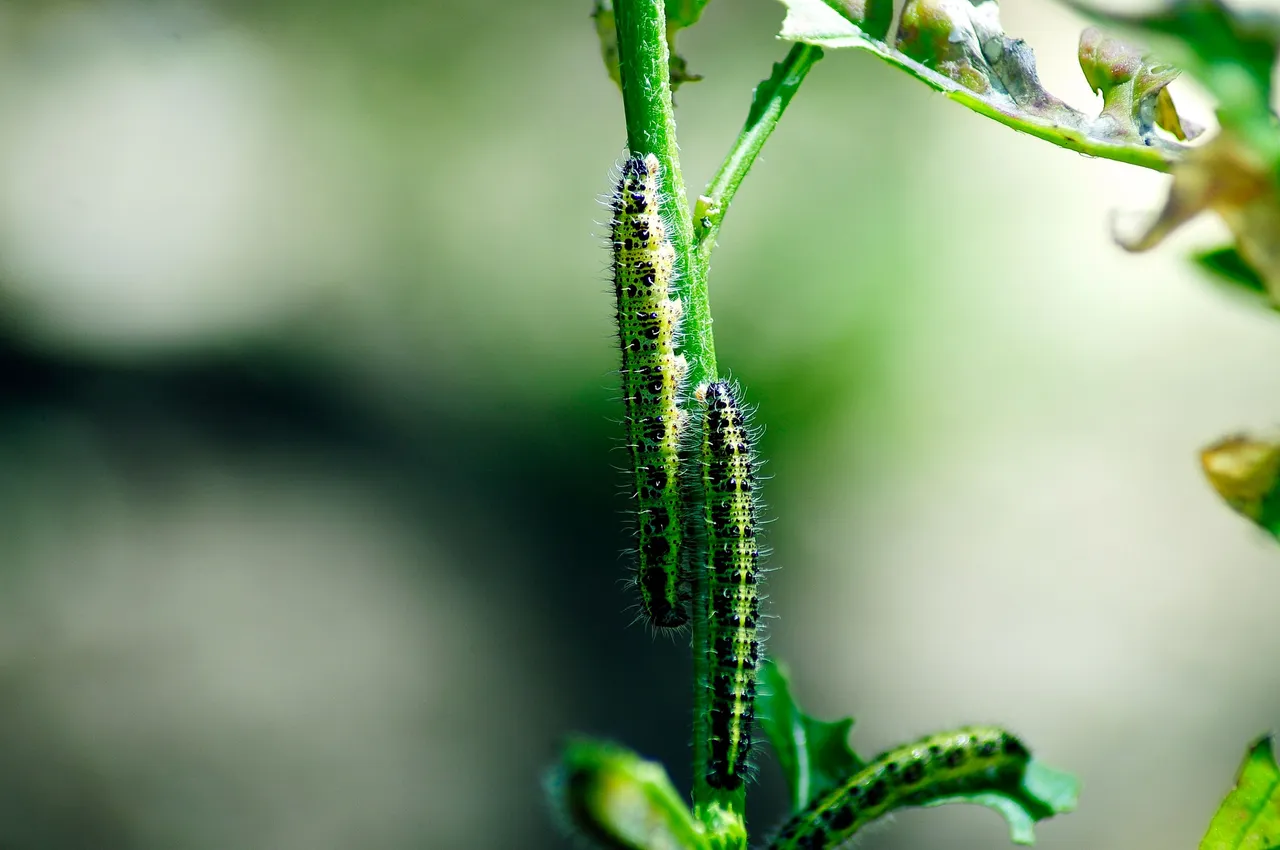
Another problem, especially when growing salad rocket in high humidity areas, is white rust. A lot of my 2022 crops got white rust, and as soon as one plant gets it, the others will also get it. I have not yet found a solution to this problem, I mostly uproot the plants that get the rust in hopes that the others will not get it. I just compost the leaves that get the rust.
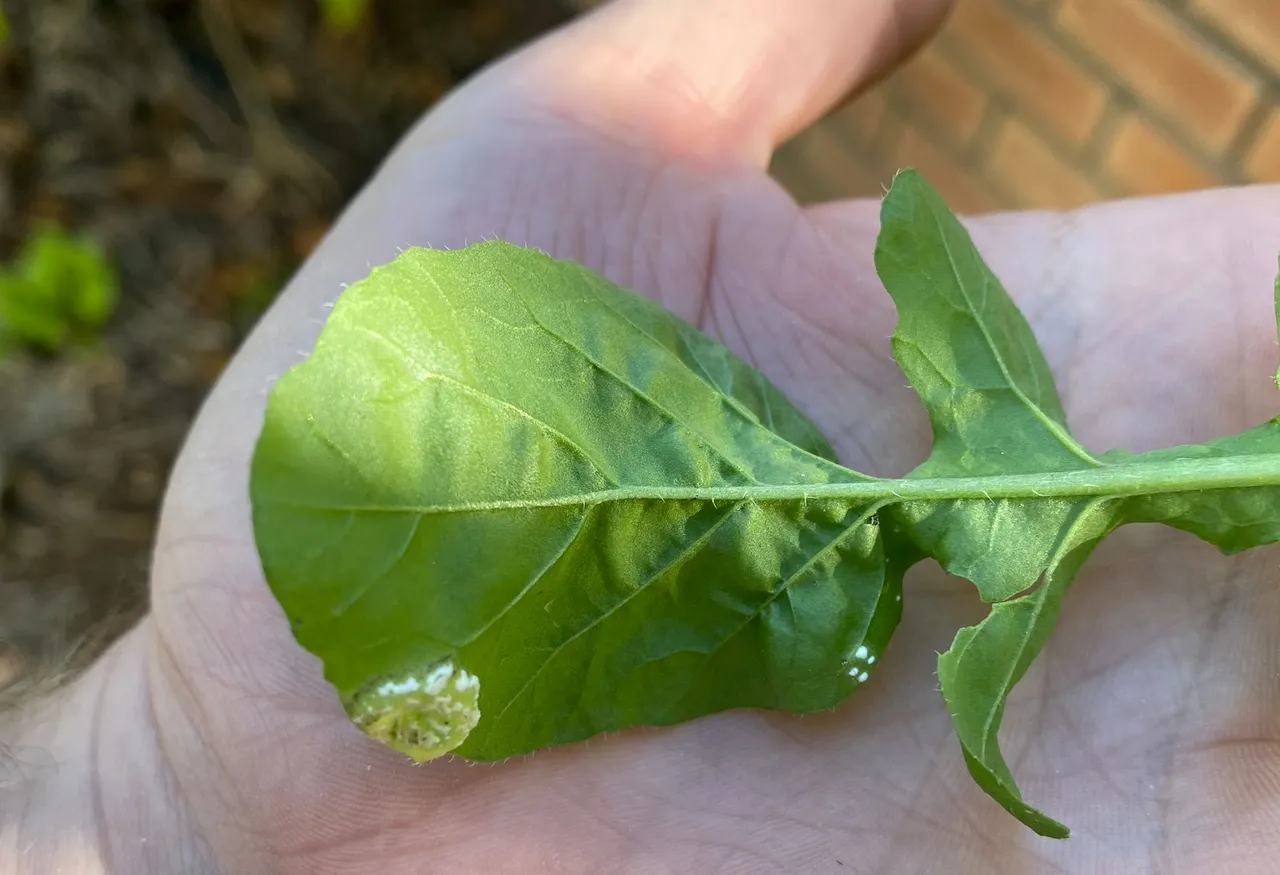
Looking to the Future: Harvesting Seeds
Harvesting the seeds for me is one of the most fun and important things to do.

I love this activity as it feels like the end of the journey. When you break open the seed pods and you see the many little seeds accumulating in the bottom of the bucket, you get a sense of accomplishment. You know you have enough seeds for the next year, and even the year upon that year! I generally leave the seed pods on the plant until the bottom ones start to dry out. As soon as this happens, I harvest them even if the top ones are still flowering. The loss of seedpods at the bottom versus losing some potential new ones does not make sense to me. Plus, as soon as something touches the dried seed pods, they will break open and you will have infinite growth of salad rocket in that one spot. It is best to catch them before they start to break open.
The time from sowing till harvesting the seed pods varies, but it is usually a couple of months for me. I sowed my seeds this year on the 22nd of August. They might be ready to harvest in the next month or so. So, it takes anything between 3-5 months, depending on the growing conditions. As I said, sometimes when I try to grow them in the summer in the Cape region, they bolt within the first month of sowing! But if you time it right, and you planted enough, you will harvest enough for a lifetime. Each seed pod contains multiple seeds, and each plant has multiple seed pods. Do the math, it feels like infinite growth! Do this the year after this, and you will really see how much you can grow and harvest.
Here are the stages of "drying" the seed pods, from green to dried out.
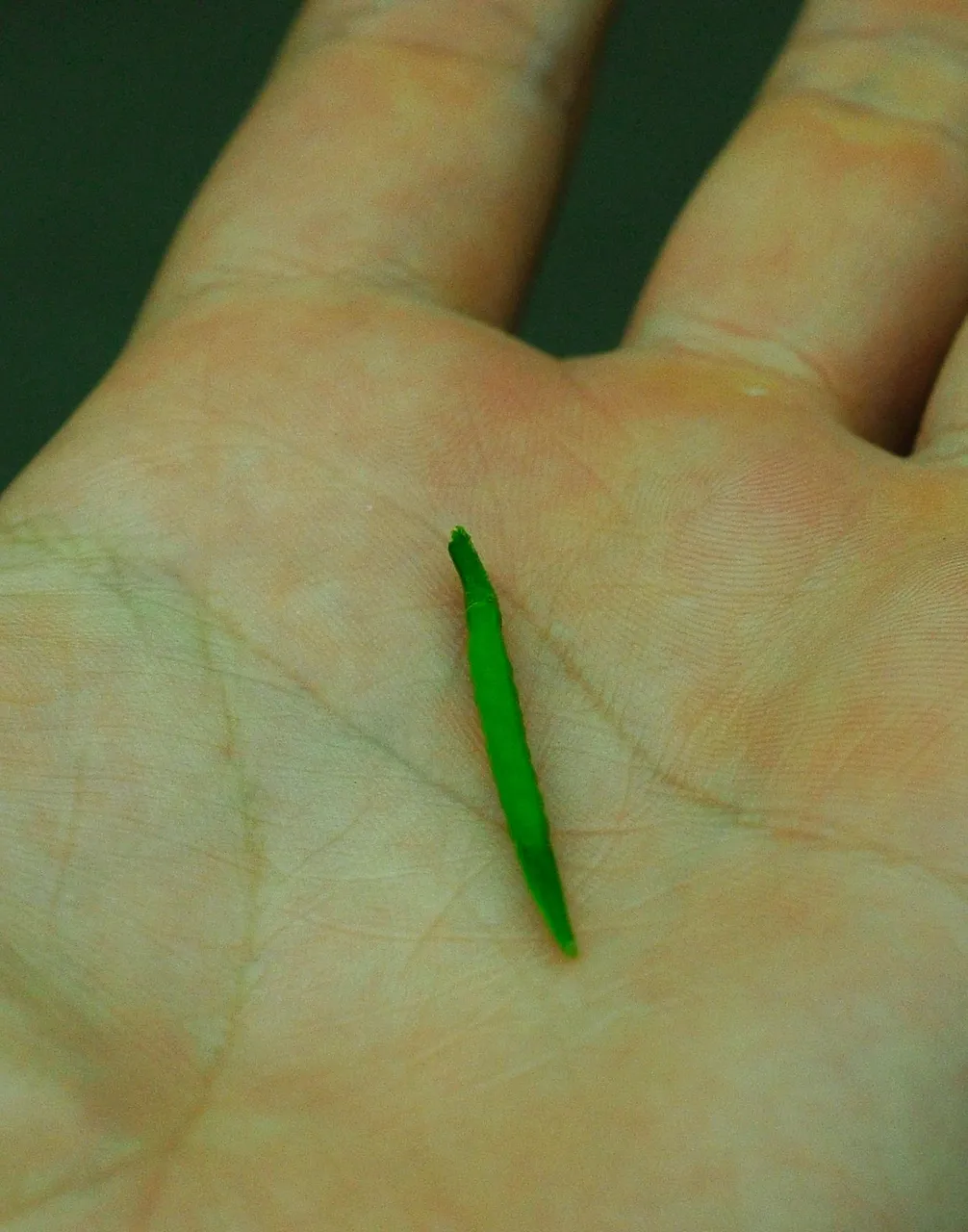 |  |
|---|---|
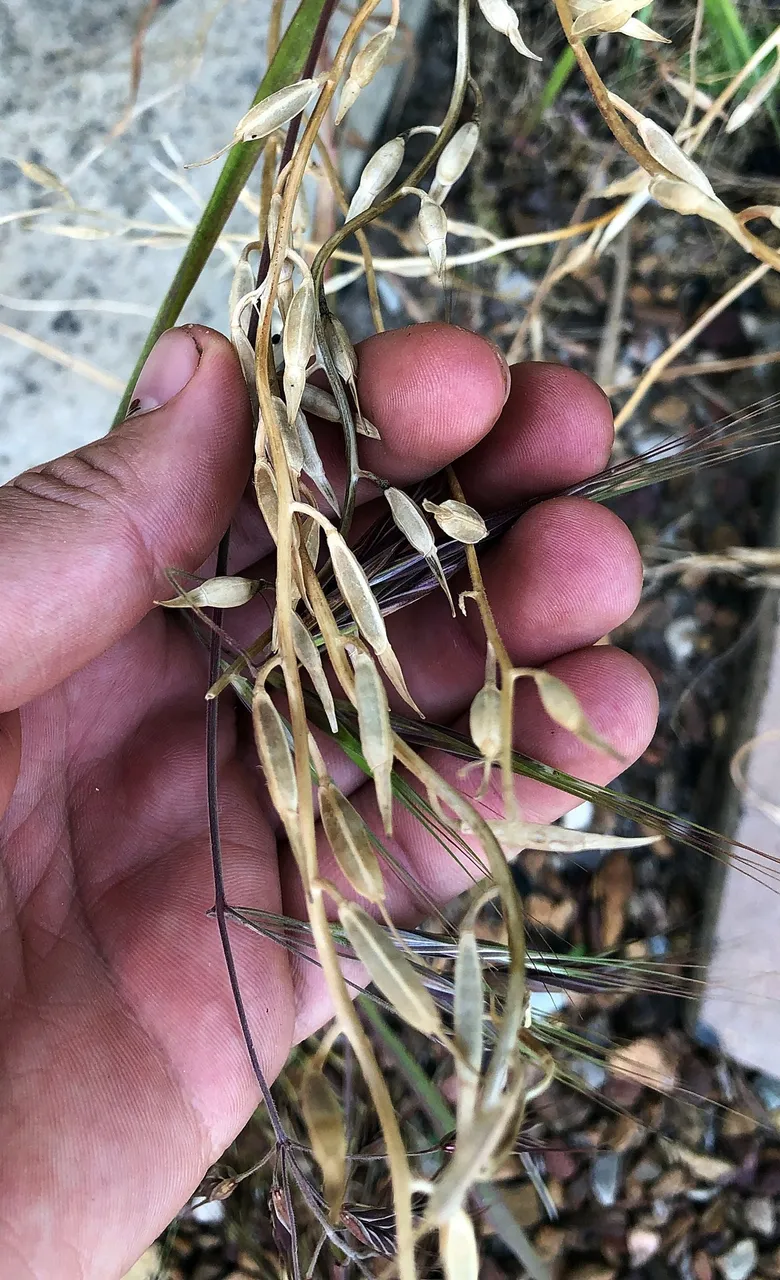 |  | 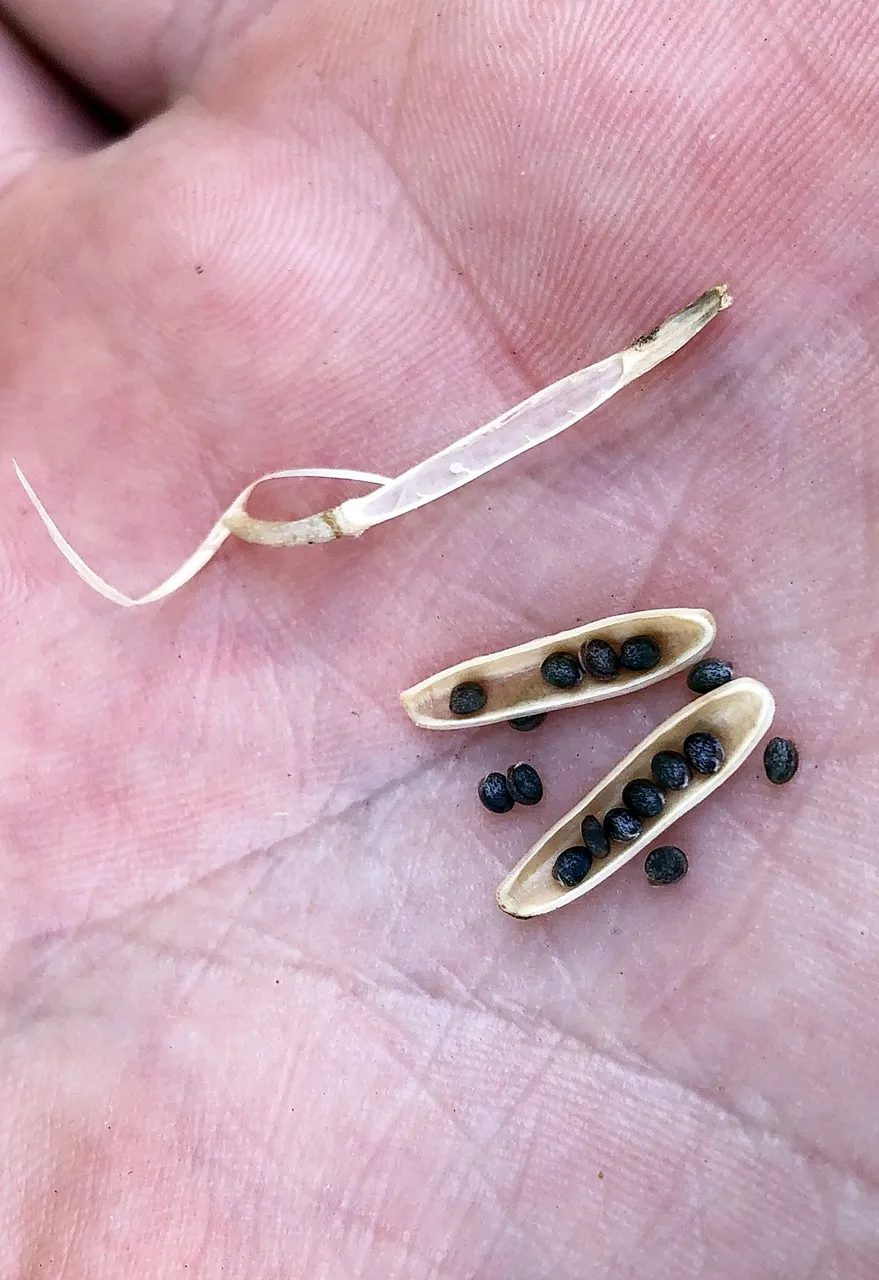 |
|---|---|---|
Postscriptum, or An End to the Love Letter
I really hope that this post will help you with your growing attempts. It is really one of the easier herbs to grow, and if you do it right you will have abundance in a very short time. But this is good, as the plant is very versatile, from eating its flowers and leaves, to making mustard (and oil!) from its seeds.
I hope that you enjoyed this post as well, containing most of what I have learned over the years regarding the growing of this herb.
For now, happy gardening, happy learning, and keep safe.
All of the writings in this post are my own, unless stated otherwise or hyperlinked. The photographs are also my own, taken with my Nikon D300 or iPhone. I also used some of my older photographs, merely for reference sake. I stated clearly when I used an old photograph by referencing/hyperlinking the previous post.